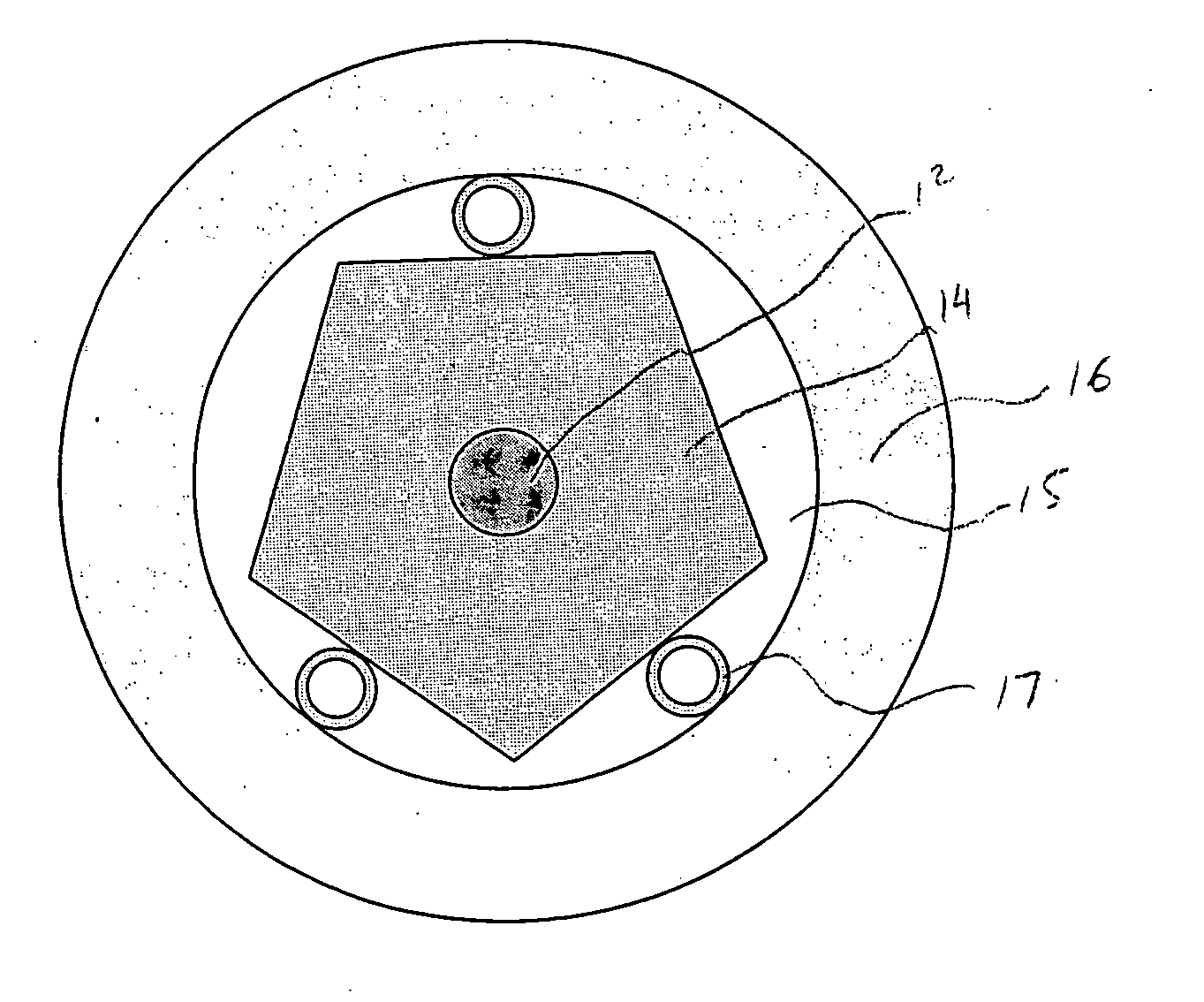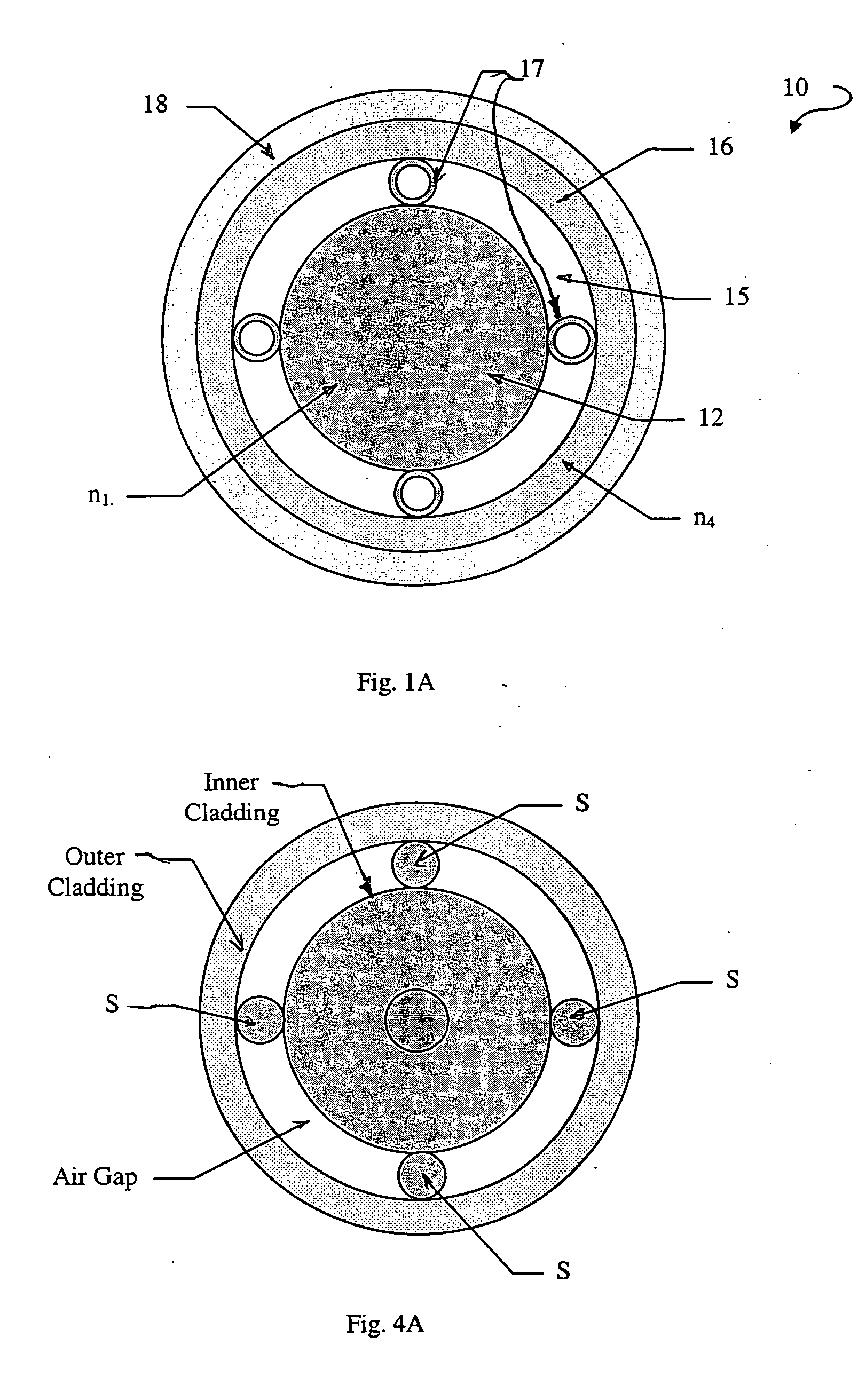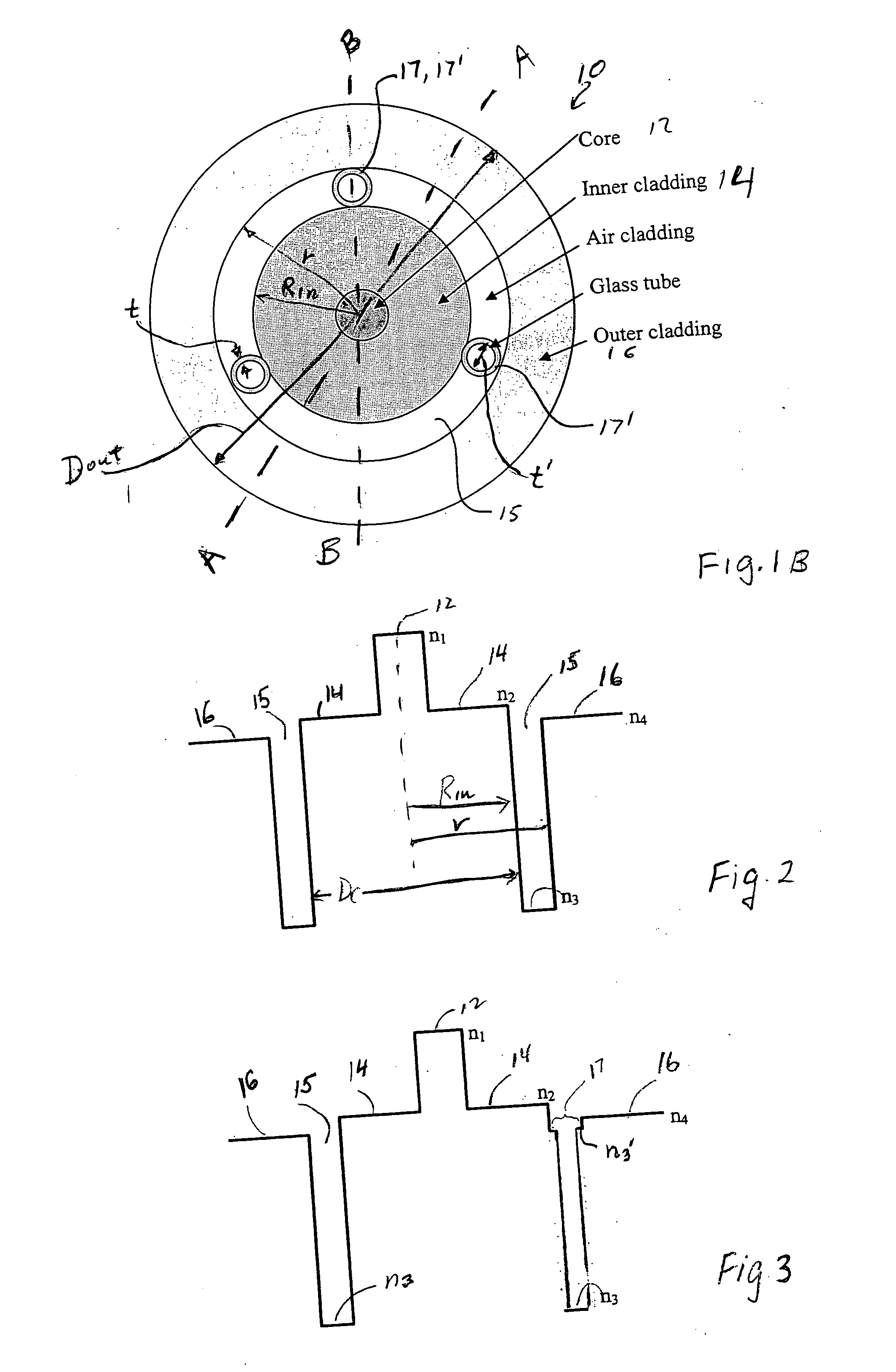High numerical aperture optical fiber
a technology of optical fibers and numerical apertures, applied in the field of optical waveguide fibers, can solve the problems of low capability low processing efficiency of fibers, and inability to meet the requirements of high-power multi-mode optical sources, and achieve the effect of minimizing the loss of pump power
- Summary
- Abstract
- Description
- Claims
- Application Information
AI Technical Summary
Benefits of technology
Problems solved by technology
Method used
Image
Examples
examples
[0073] The invention will be further clarified by the following examples.
[0074]FIGS. 10A and 10B illustrate schematically a relative refractive index profile of a the optical fiber 10 of FIG. 5. More specifically, FIGS. 10A and 10B depicts optical fiber's refractive index percent delta (relative to that of the pure silica) vs. the distance measured from the core center. FIG. 10A illustrates schematically a refractive index profile taken across the region that does not contain the air holes 24, 26, for example, along the line Y-Y of the fiber depicted in FIG. 5. FIG. 10B illustrates schematically a refractive index profile of the same fiber, but taken across the region that contains the air hole 24 (for example, along the line A-A).
[0075]FIG. 11 illustrates schematically the refractive index profile (percent delta, relative to that of the pure silica) of an exemplary optical fiber of the present invention along the Y-Y axis, measured from the core center. This optical fiber has the...
PUM
 Login to View More
Login to View More Abstract
Description
Claims
Application Information
 Login to View More
Login to View More - R&D
- Intellectual Property
- Life Sciences
- Materials
- Tech Scout
- Unparalleled Data Quality
- Higher Quality Content
- 60% Fewer Hallucinations
Browse by: Latest US Patents, China's latest patents, Technical Efficacy Thesaurus, Application Domain, Technology Topic, Popular Technical Reports.
© 2025 PatSnap. All rights reserved.Legal|Privacy policy|Modern Slavery Act Transparency Statement|Sitemap|About US| Contact US: help@patsnap.com



